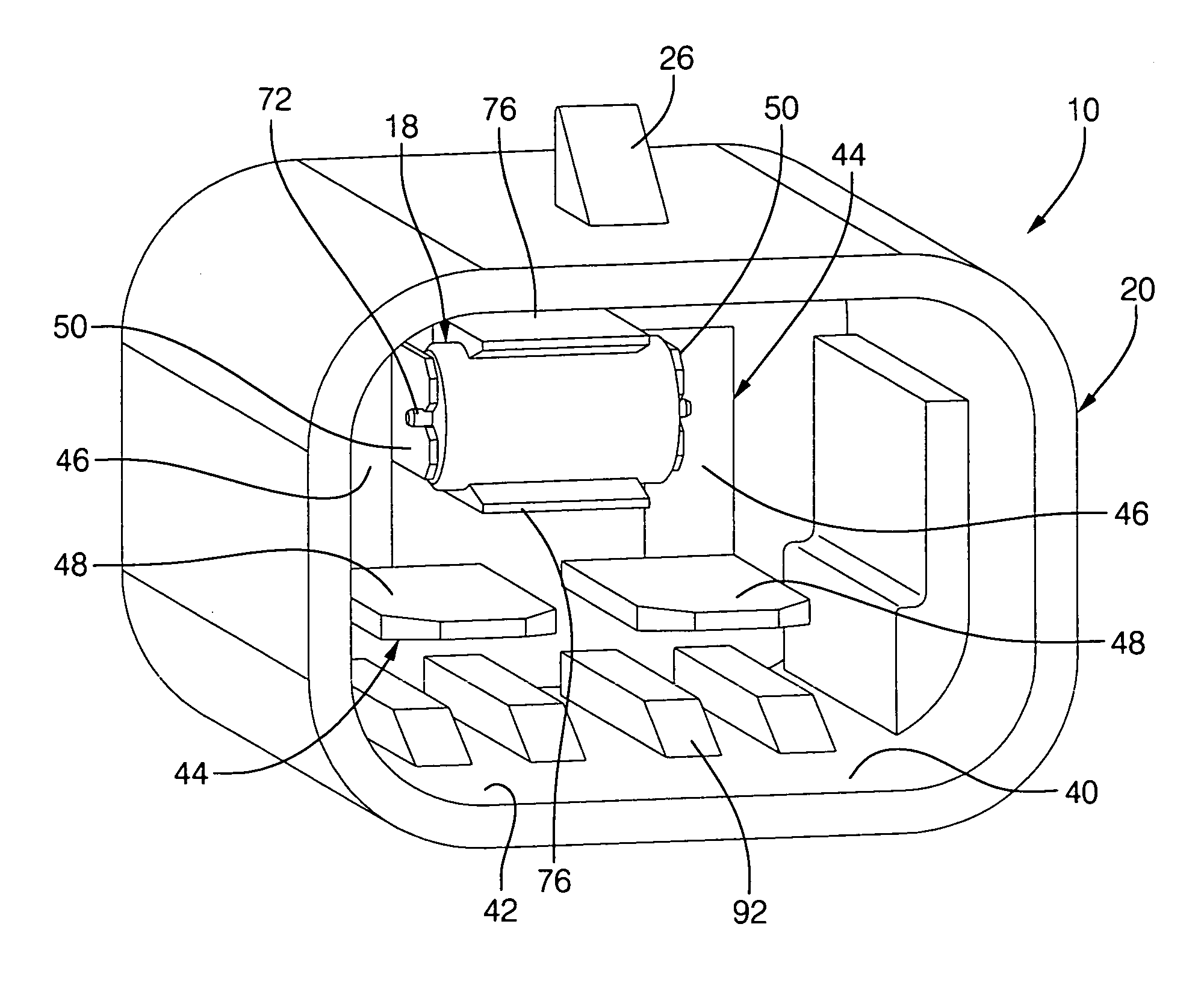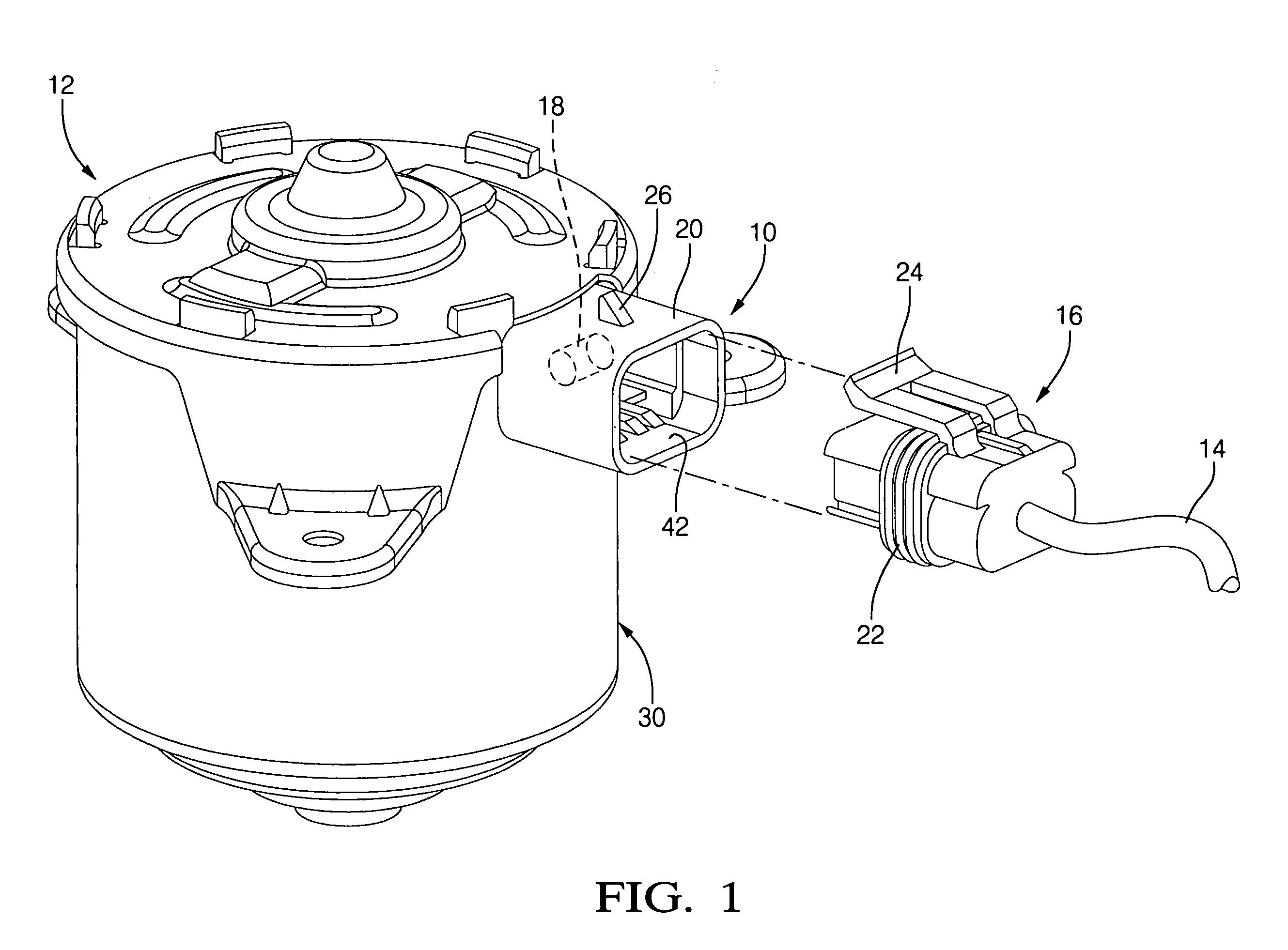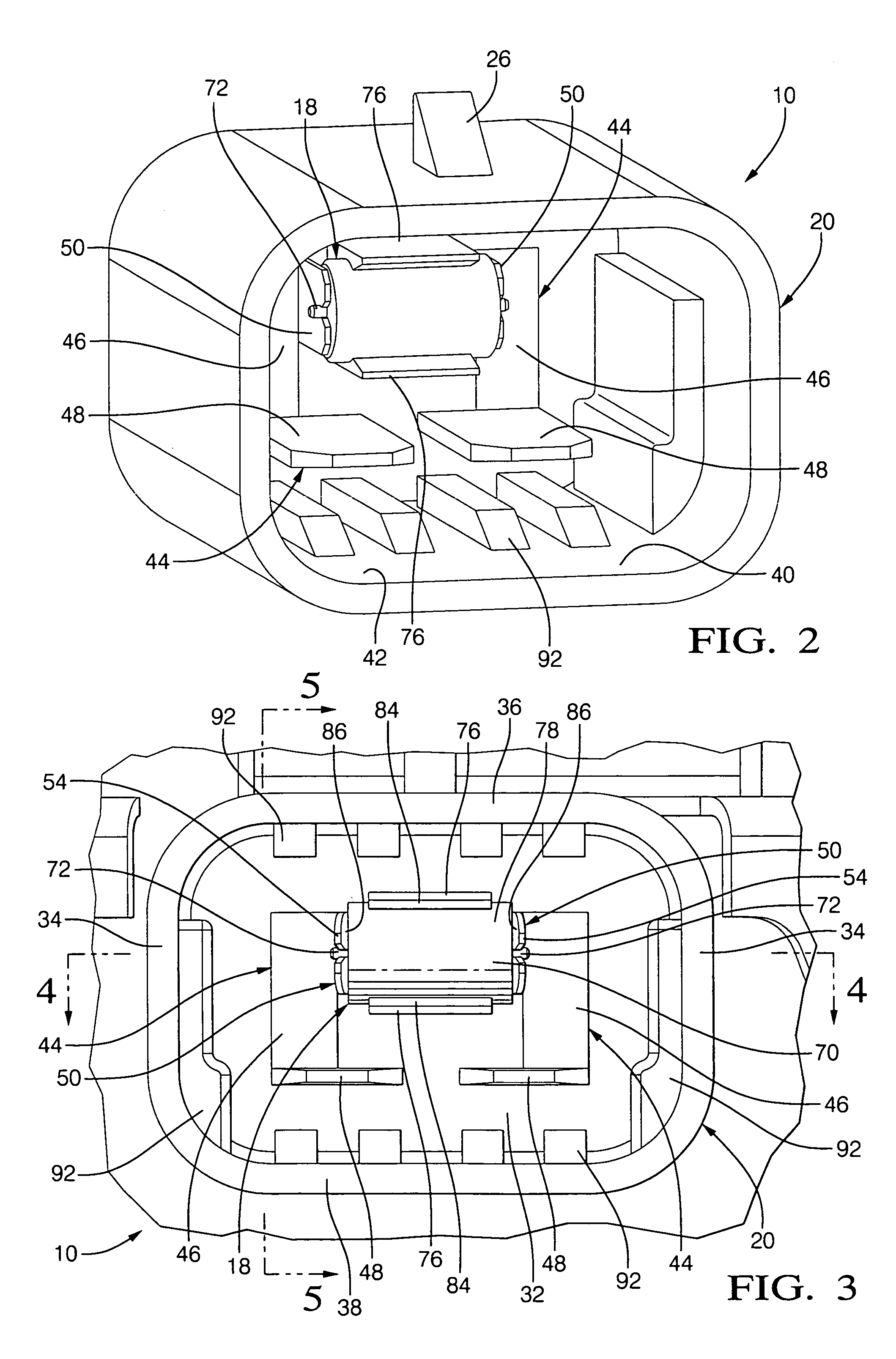Electrical connector and component packaging assembly
- Summary
- Abstract
- Description
- Claims
- Application Information
AI Technical Summary
Benefits of technology
Problems solved by technology
Method used
Image
Examples
Embodiment Construction
[0024]Referring to FIG. 1, an electrical connector assembly 10 is illustrated in application with an electrical load such as an automotive engine cooling fan motor 12. Motor 12 is in circuit with an electronic control module and / or power control module (not illustrated) via a wiring harness 14 terminated by a mating plug or connector 16.
[0025]In the contemplated environment for use of the present invention, motor 12 is part of a dual fan motor shroud assembly wherein the motors operate in series-parallel, allowing for multiple fan speed operation to optimize airflow characteristics as well as noise, vibration and harshness requirements for under-hood vehicle applications. Fan speed changes (low speed to high speed, high speed to low speed, and low speed to off) are typically effected by a relay and often generate a large voltage transient condition.
[0026]Large voltage transients are generated from energy stored in the motor's magnetic fields, which is released after opening the rela...
PUM
 Login to View More
Login to View More Abstract
Description
Claims
Application Information
 Login to View More
Login to View More - R&D
- Intellectual Property
- Life Sciences
- Materials
- Tech Scout
- Unparalleled Data Quality
- Higher Quality Content
- 60% Fewer Hallucinations
Browse by: Latest US Patents, China's latest patents, Technical Efficacy Thesaurus, Application Domain, Technology Topic, Popular Technical Reports.
© 2025 PatSnap. All rights reserved.Legal|Privacy policy|Modern Slavery Act Transparency Statement|Sitemap|About US| Contact US: help@patsnap.com



